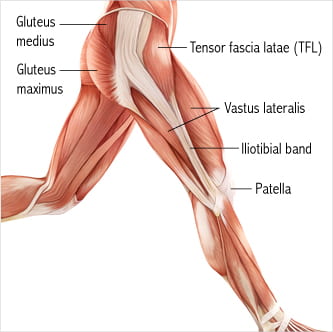https://www.studyblue.com/notes/note/n/the-hip/deck/2926480

Pectoralis Minor Flexibility Test
Measure Distance

***
Quadriceps Flexibility Test
To set up, first, bring the heel towards the buttocks until you meet resistance. The heel should approximate the buttocks, if the quads are of normal length. Then, ask the patient to try to straighten their leg, at 50% of their maximum ability, for 30 seconds. As with the psoas (and all PIR work), after 15 seconds, ask them to take a deep breath and hold it, while still contracting the quads. At 30 seconds, when they exhale, push the heel forwards gently, with mild over-pressure. Slow is smart, as the quad stretch can be uncomfortable.
Note that you can gain extra leverage in the flexible patient by gently lifting their thigh off the table (with your other hand), while still maintaining full-flexion at the knee.
***
Hamstrings Flexibility Test
As shown in the SLR photo above, bring the straightened leg as high as possible (without lifting sacrum off the table) and then place their mid-calf onto your shoulder. Ask them try to lower the leg as 50% maximum contraction for 30 seconds...taking the deep breath at half way through the contraction (at 15 sec. mark). When they blow out, inch forwards, bringing their hip into further flexion. As with the quads, slow is smart, as this stretch can be uncomfortable.
You may also explore moving the leg medially or laterally by 15-30° to increase their stretch, as there may be a difference in the shortening of either the semitendinousus or the semimembranosus muscles.
NOTE: Remember to keep the patient's knee "locked" in full extension (as demonstrated in the SLR photo above), otherwise the clever patient will bend at the knee to reduce the discomfort of the stretch.
***
Modified Obers Test (Lateral Rotation)

***
Hip Adductor Flexibility Test
***
GAPS:
ITB - iliotibial band
TFL - Tensor Fascia Latae
GLUTE MED
HIP FLEXOR


http://blog.schoolofthaimassage.com/2013/10/sartorius-muscle-knee-pain-and-postural.html


No comments:
Post a Comment